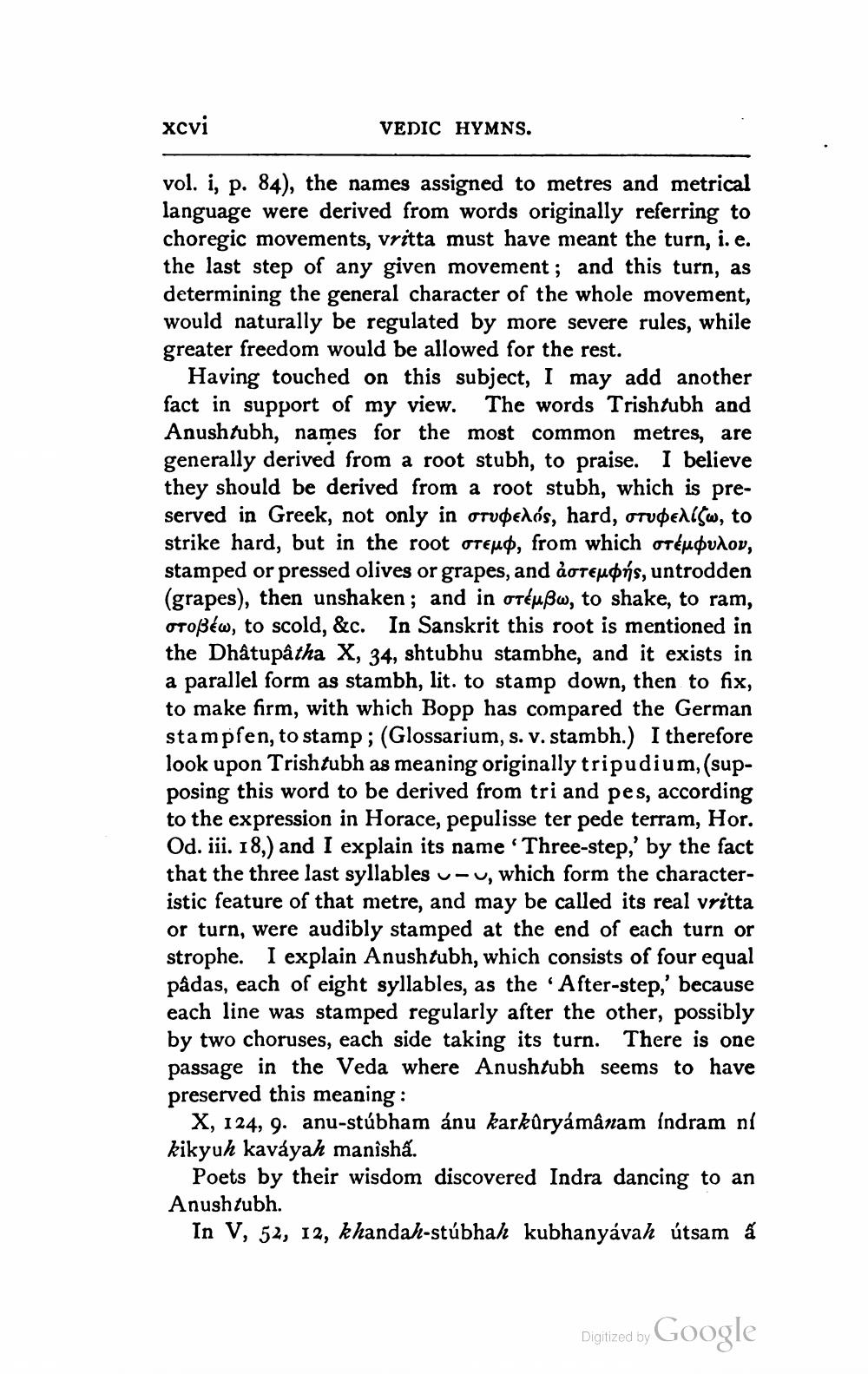________________
xcvi
VEDIC HYMNS.
vol. i, p. 84), the names assigned to metres and metrical language were derived from words originally referring to choregic movements, vritta must have meant the turn, i. e. the last step of any given movement; and this turn, as determining the general character of the whole movement, would naturally be regulated by more severe rules, while greater freedom would be allowed for the rest.
Having touched on this subject, I may add another fact in support of my view. The words Trishtubh and Anush/ubh, names for the most common metres, are generally derived from a root stubh, to praise. I believe they should be derived from a root stubh, which is preserved in Greek, not only in orupeλós, hard, orupeλ(w, to strike hard, but in the root στεμφ, from which στέμφυλον, stamped or pressed olives or grapes, and aσreμons, untrodden (grapes), then unshaken; and in σréμßw, to shake, to ram, OTOẞéw, to scold, &c. In Sanskrit this root is mentioned in the Dhâtupâtha X, 34, shtubhu stambhe, and it exists in a parallel form as stambh, lit. to stamp down, then to fix, to make firm, with which Bopp has compared the German stampfen, to stamp ; (Glossarium, s. v. stambh.) I therefore look upon Trishtubh as meaning originally tripudium, (supposing this word to be derived from tri and pes, according to the expression in Horace, pepulisse ter pede terram, Hor. Od. iii. 18,) and I explain its name 'Three-step,' by the fact that the three last syllables 513, which form the characteristic feature of that metre, and may be called its real vritta or turn, were audibly stamped at the end of each turn or strophe. I explain Anushtubh, which consists of four equal pâdas, each of eight syllables, as the 'After-step,' because each line was stamped regularly after the other, possibly by two choruses, each side taking its turn. There is one passage in the Veda where Anushtubh seems to have preserved this meaning:
X, 124, 9. anu-stúbham ánu karkûryámânam indram ní kikyuh kaváyah manisha.
Poets by their wisdom discovered Indra dancing to an Anush/ubh.
In V, 52, 12, khandah-stúbhah kubhanyávah útsam ấ
Digitized by Google




